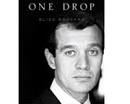Anatole Broyard and Passing For White

Anatole Broyard and Passing for White…born into the rigid racial caste system of the nineteen-twenties Deep South, the gifted New York Times literary critic Anatole Broyard died a country squire in Connecticut in 1990. His secret – that he was “passing” for white in an utterly race-conscious America – was disclosed to his daughter only at the end of his life.
Anatole Broyard and Passing for White
By Brent Staples
Back When Skin Color Was Destiny — Unless You Passed for White
The New Yorker was trying not to speak ill of the dead when it described Anatole Broyard as the “famously prickly critic for the Times, a man who demanded so much from books that it seemed he could never be satisfied.” From his early reviews for The Times in the 1960’s up to his death in 1990, Mr. Broyard was often gratuitously cruel and clever at the author’s expense.
The novelist Philip Roth was one of the favored few. Mr. Broyard praised him in the column “About Books” and seemed to see his life through Mr. Roth’s work. When Mr. Broyard was diagnosed with cancer, for example, he compared his symptoms to those of Portnoy, Mr. Roth’s fictional alter ego in “Portnoy’s Complaint.”
The comparison made perfect sense. Mr. Roth’s great theme was his own struggle to preserve selfhood against the smothering pressures of ethnic identity. That, in a nutshell, was Mr. Broyard’s life. He was a light-skinned black man born in New Orleans in 1920 into a family whose members sometimes passed as white to work at jobs from which black people were barred. The largest private employer of black labor at the time was the Pullman Company, which sought college-educated black men to work essentially as servants on train cars that accommodated white travelers only.
Anatole Broyard wanted to be a writer — and not just a “Negro writer” consigned to the back of the literary bus. He followed the trail blazed by tens of thousands of light-skinned black Americans. He methodically cut ties with his family (including a mother and two sisters) and took up life as a white man with a white wife in white Connecticut. By the late 1980’s, he had been “white” for 40 years, with two adult children who were unaware that they were part of a large black family that included an aunt who lived an hour away in Manhattan.
This was raw meat for Philip Roth, who may have known the outlines of the story even before Henry Louis Gates Jr. told it in detail in The New Yorker in 1996. When Mr. Roth’s novel about “passing” — “The Human Stain” — appeared in 2000, the character who jettisons his black family to live as white was strongly reminiscent of Mr. Broyard.
The action in Mr. Roth’s book centers on Coleman Silk, an aging classics professor who is forced into retirement after he is accused of making a racist remark in class. (For decades, Mr. Broyard scandalized liberal Manhattan friends like Harold Brodkey by making virulent comments about black people, even about people he passed while strolling on the streets.)
Mr. Roth’s novel generated an interesting discussion among members of the black elite, some of whom were surprised that a writer from such distant terrain had exposed the centuries-old conspiracy of silence among black people that permitted passers to live without fear of being outed.
Movies rarely convey the power of the novels that inspire them. The film version of “The Human Stain” due out next month is an exception; it has been stripped of subplots that diluted the novel, making the film more useful as an assay of the 1940’s, a neglected period in the racial history of this country.
Light-skinned black people who passed typically did so by moving to places where they were unknown. The 1940’s offered millions the chance to get lost, both through the Great Migration — in which blacks moved en masse from the rural South into the cities — and especially World War II. Light-skinned black men entering the military could check the box on the enlistment form that said “Negro” and be confined to Jim Crow units where they built roads, dug latrines or served food to whites.
It is likely that thousands of them instead did what Coleman Silk and Mr. Broyard did. They checked the box that said “white,” which allowed them to become combat soldiers and possibly even officers in charge of white units. In some light-skinned families, some members entered the military as white, while others elected to enter as black, even though it meant subjecting themselves to segregation and second-class treatment.
Those who had escaped the penalties of blackness in the military were often unwilling to go back to second-class citizenship after the war. One demographer estimated that more that 150,000 black people sailed away permanently into whiteness during the 1940’s alone, marrying white spouses and most likely cutting off their black families.
The people left behind would describe these relatives as “passed” (a euphemism for dead) or as “lost to the family.” They conspired to protect passing relatives by pretending to be servants when they visited their homes — and sometimes by agreeing not to recognize them on the street. The black press went along with the ruse, quoting passing Negroes anonymously in articles that ridiculed high-society racists for being too stupid to know a Negro when they saw one.
A young relative who saw Mr. Broyard’s name in The Times wished to meet him, but dropped the idea when told that he was “living on the other side” and did not want to meet black family members. The newspapers and magazines of the black press could have outed Mr. Broyard — whose passing was widely known among the black elite — but chose not to.
The most heartbreaking moment in “The Human Stain” comes when the near-white Coleman Silk informs his darker-skinned mother that he is engaged to a white woman and has told her that his parents are dead. White moviegoers will see this as tragic. Black moviegoers who lived through American apartheid — the prime period of passing — will find it not just tragic but familiar.
Brent Staples is an editor at the New York Times.His book Parallel Time: Growing up In Black and White,[3] won the Anisfield Wolf Book Award.[4] He specializing in politics and cultural issues,
Copyright 2003 The New York Times Company
